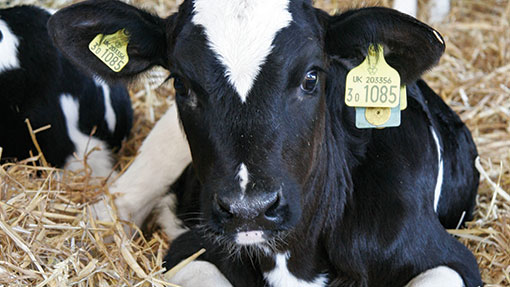3 things to do to reduce beef calving difficulties

Difficult calvings contribute heavily to production losses in beef herds, with four times more fatalities among assisted calves within 24 hours of birth.
However, farmers can reduce casualties and reproduction losses by focusing on cow management and nutrition, and by making better informed breeding decisions.
Calves or cows that die at calving or soon afterwards are the most obvious economic loss, but a cow that has had a difficult labour can experience fertility issues too.
Pembrokeshire vet Richard Davies says damage or infection can result in infertility, so early treatment is vital.
A haemorrhage from a torn artery is one of the most common urgent calls he receives after a difficult calving. Manually pinching the damaged vessel can help until a vet arrives.
Some beef breeds are prone to uterine prolapses after a tough calving. “Sometimes you can prevent this by pushing the uterus back in as far as possible and getting the cow to stand up,’’ says Mr Davies, of the Fenton Veterinary Practice, Haverfordwest.
Retained cleansings, which almost always follow a tough calving, can also result in an infection of the womb, so these must be dealt with promptly.
It is a critical time for calves too. A difficult calving can affect the calf’s natural reflexes to take that crucial first breath.
The reflex can be stimulated by poking a stiff piece of straw up the nostril, with chest compression and vigorous movement of the upper forelimb and by blowing up one nostril, with the head and neck extended, while blocking the other nostril.
The two main causes of difficult calvings are the pelvic size of heifers and the size of calves.
Vet Maarten Boers, of the Livestock Partnership, West Sussex, says both can be addressed. He recommends measuring the pelvic size of heifers.
“I have done it on two herds now. In one herd there was only a small variation in the pelvic areas while on the second farm there were a number of heifers that had particularly small pelvic areas,’’ he says. “We decided not to breed from the smallest 10-15% of heifers. By doing this for a few years we hope to create a herd with far fewer calving difficulties.’’
There are three factors that influence pelvic area in yearling heifers – genetics of the sire and dam, breed and nutrition. Continental breeds have larger pelvic areas than most British breeds. Also, certain breeds, and bulls within a breed, have shorter gestation length and give birth to smaller calves. These factors can be used in identifying females that have fewer calving problems, says Mr Boers.
Nutrition
Getting the nutritional requirements of the cow right in the dry cow and post-calving periods will also have a significant bearing on calf growth rate.
Independent beef and sheep nutritionist David Hendy says nutrition is the one area of management where breeders can have total control. “Getting it right brings huge rewards from easy calving,’’ he says.
Mr Hendy advises assessing body condition while managing feed according to a cow’s requirements. Sixty percent of foetal weight is gained in the final 60-65 days before calving.
He recommends feeding to appetite – approximately 1.8-2.2% of the cow’s bodyweight in dry matter a day – managing energy needs according to body condition, and analysing forages. Mineral and trace element levels also should not be overlooked.
